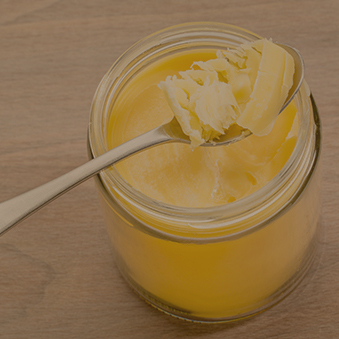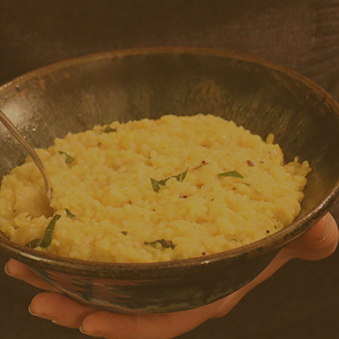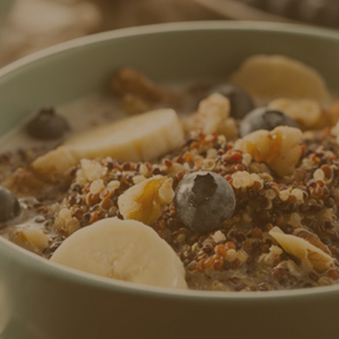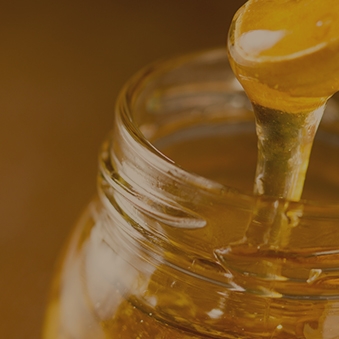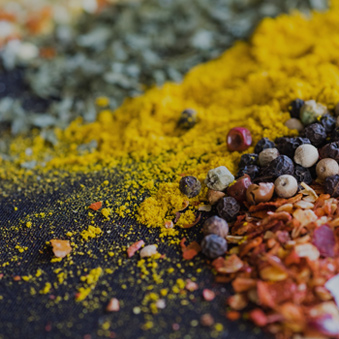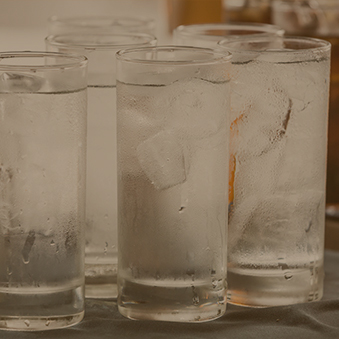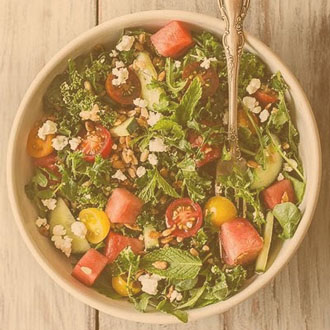Food
Everything is poison and everything is medicine dependent on the knowledge of what is being used and the health of the person using it. Even the most nutrient rich foods can be poison to our bodies when made, handled or consumed incorrectly.
AS MEDICINE
Warm Water
Warm water has been used for centuries to aid the body in detoxing. Warm water helps increase circulation, improve digestion and clean channels in the body encouraging flow which further contributes to healthy digestion.
Something to consider: Take two dry sponges placed side by side. On one pour water that has been heated to 100-140 degrees and on the other pour water that has been cooled to 40 (typical of any beverage where ice is commonly added in the US). Notice the way each absorbs the water. The warm water is immediately absorbed and the cool water sits atop. If you tilt it downwards the cool water would even run right off barely hydrating the sponge. The tissues in your body rehydrate in a similar way.
If warm water is not a part of your daily intake of beverages and you decide to give it a try you may find yourself craving even more initially as the water slowly rehydrates your body.
Spices
Spices are used in Ayurveda to assist in the digestion of food or specific food combinations for each body type. Spices also play an important role in enzyme production and maintenance, providing a key ingredient in all Ayurvedic nutrition. From the Ayurvedic perspective, the foundation of good health is good digestion. Changing the spices according to the food being prepared with current balance (and imbalance) of the person eating it provides the enzymes additional support and the ability of the person to digest that food.
Eating foods in your season
We are always in a continuous flux with the ever changing environmental conditions and in order to maintain optimal health and stay energized throughout the day our bodies depend on a continuous interaction between our internal environment and the natural elements we are surrounded by, including environmental factors like temperature, wind, rain, land and water and humidity. Within each climate, nature provides us with a variety of foods that flourish under their present conditions, and fail to thrive in others due to changes in the environment they are exposed. An example of a food that helps nourish us and keep us balanced through a season is melons. Melons ripen during the peak of Pitta season (mid-late summer). They cool us off, hydrate us and provide us with an cocktail of electrolytes which can easily be depleted during extreme heat. They give us balance in summer. This same nourishing food that gives us balance in heat has a very different affect on the body if eaten during the winter months or spring season (purchased from a market that imports melons year round), times of the year when our bodies need more heat, more bitterness and astringency in our food. When we eat foods nearest to the environment we are living in we take in balance that nature provides, an inherent cellular intelligence that has existed since creation. When we go against this intelligence we invite disease into our lives. “Look deep into nature and then you will understand everything better.” – Albert Einstein
Ghee
All ghee is not created equal and the effect each one has can have quite a different effect on the body, depending on where the milk was sourced, how the cows were raised and how the ghee was prepared.
The Westernized version of ghee is a stick of butter in a pan with water and milk solids cooked out. This is actually called clarified butter, not ghee. This version delivers an abundance of nutrition to us like CLA (conjuated linoleic acid), butyric acid (food for all our microbial population), Omega-3 and Omega 9 essential fatty acids, along with many vitamins, minerals and antioxidants. What it does not do, however, is deliver the medicinal qualities that Ghee is intended for in aiding digestion and bioavailability of herbs, spices and foods.
A regular stick of butter comes from cows milk. Cows milk is very sweet and this makes it heavy and hard to digest. It also has a cooling effect on the body, again making digestion slow. Real ghee is made from milk that has been cultured. This gives a sour taste which are qualities of earth and fire. This sourness promotes heating qualities that help our body digest and assimilate nutrients.
Remember that everything is poison and everything is medicine dependent on the knowledge of what is being used and the health of the person using it. Even the most incredible medicines (like Ghee) can be poison to our bodies when made, handled or consumed incorrectly.
Warm Water
Warm water has been used for centuries to aid the body in detoxing. Warm water helps increase circulation, improve digestion and clean channels in the body encouraging flow which further contributes to healthy digestion.
Something to consider: Take two dry sponges placed side by side. On one pour water that has been heated to 100-140 degrees and on the other pour water that has been cooled to 40 (typical of any beverage where ice is commonly added in the US). Notice the way each absorbs the water. The warm water is immediately absorbed and the cool water sits atop. If you tilt it downwards the cool water would even run right off barely hydrating the sponge. The tissues in your body rehydrate in a similar way.
If warm water is not a part of your daily intake of beverages and you decide to give it a try you may find yourself craving even more initially as the water slowly rehydrates the tissues in your body.
Spices
Spices are used in Ayurveda to assist in the digestion of food or specific food combinations for each body type. Spices also play an important role in enzyme production and maintenance, providing a key ingredient in all Ayurvedic nutrition. From the Ayurvedic perspective, the foundation of good health is good digestion. Changing the spices according to the food being prepared with current balance (and imbalance) of the person eating it provides the enzymes additional support and the ability of the person to digest that food.
Eating foods in your season
We are always in a continuous flux with the ever changing environmental conditions and in order to maintain optimal health and stay energized throughout the day our bodies depend on a continuous interaction between our internal environment and the natural elements we are surrounded by, including environmental factors like temperature, wind, rain, land and water and humidity. Within each climate, nature provides us with a variety of foods that flourish under their present conditions, and fail to thrive in others due to changes in the environment they are exposed.
An example of a food that helps nourish us and keep us balanced through a season is melons. Melons ripen during the peak of Pitta season (mid-late summer). They cool us off, hydrate us and provide us with an cocktail of electrolytes which can easily be depleted during extreme heat. They give us balance in summer. This same nourishing food that gives us balance in heat has a very different affect on the body if eaten during the winter months or spring season (purchased from a market that imports melons year round), times of the year when our bodies need more heat, more bitterness and astringency in our food. When we eat foods nearest to the environment we are living in we take in balance that nature provides, an inherent cellular intelligence that has existed since creation. When we go against this intelligence we invite disease into our lives.
“Look deep into nature and then you will understand everything better.” – Albert Einstein
Ghee
All Ghee is not created equal and the effect each one has can have quite a different effect on the body, depending on where the milk was sourced, how the cows were raised and how the Ghee was prepared.
The Westernized version of Ghee is a stick of butter in a pan with water and milk solids cooked out. This is actually called clarified butter, not Ghee. This version delivers an abundance of nutrition to us like CLA (conjuated linoleic acid), butyric acid (food for all our microbial population), Omega-3 and Omega 9 essential fatty acids, along with many vitamins, minerals and antioxidants. What it does not do, however, is deliver the medicinal qualities that Ghee is intended for in aiding digestion and bioavailability of herbs, spices and foods.
A regular stick of butter comes from cows milk. Cows milk is very sweet and this makes it heavy and hard to digest. It also has a cooling effect on the body, again making digestion slow. Real Ghee is made from milk that has been cultured. This gives a sour taste which are qualities of earth and fire. This sourness promotes heating qualities that help our body digest and assimilate nutrients.
Remember that everything is poison and everything is medicine dependent on the knowledge of what is being used and the health of the person using it. Even the most incredible medicines (like Ghee) can be poison to our bodies when made, handled or consumed incorrectly.
Kitchari
Kitchari is an ayurvedic recipe used as a “cleansing therapy” because it is very easy for the body to digest and assimilate nutrients. Using a blend of rice, mung beans and stimulating spices, digestion strengthens allowing the body to undergo a detox. By keeping it simple and using as a monodiet and not combining heavy nutrient dense substances, kitchidi is detoxifying and balancing to all.
Kichari can be eaten by all dosas but because of its grounding and warming qualities is especially good for vata.
It is important to note that like Ghee, all kitchari recipes that you can find on the internet are not ayurvedic and not healing. Recipes that call for the addition of oils, multiple veggies, coconut, sesame seeds or raw foods are heavier to digest and not appropriate in times of cleansing, when attempting to bring balance back into the body.
Kitchari
Kitchari is an ayurvedic recipe used as a “cleansing therapy” because it is very easy for the body to digest and assimilate nutrients. Using a blend of rice, mung beans and stimulating spices, digestion strengthens allowing the body to undergo a detox. By keeping it simple and using as a monodiet and not combining heavy nutrient dense substances, kitchari is detoxifying and balancing to all.
Kitchari can be eaten by all dosas but because of its grounding and warming qualities is especially good for vata.
It is important to note that like Ghee, all kitchari recipes that you can find on the internet are not ayurvedic and not healing. Recipes that call for the addition of oils, multiple veggies, coconut, sesame seeds or raw foods are not easy to digest and not appropriate in times of cleansing, when attempting to bring balance back into the body.
AS POISON
Viruddha Ahara
The classical Ayurvedic texts have identified certain food combinations to cause ill-effects to our health, with skin diseases topping the list. Acne flareups, hives, and herpes are some of the more common conditions that arise when poor food combinations are consumed. Other typical symptoms include digestive distress with reactions ranging from gas, bloating and stomach distention to malabsorption of nutrients. A few of the most common conflicting food combinations include:
- Fish with Dairy
- Raw fruit with Dairy
- Honey mixed with equal parts Ghee
- Consuming Hot Food with Cold Beverages (Ice!) or Cold Food (Salads!) with Hot Beverages
Fruit
Ayurveda teaches us that foods digest at different rates and when we combine certain foods in a meal with similar rates of digestion the foods will be digested by our body without a noticeable digestive upset. When we combine foods with extreme variables in rates of digestion or opposing properties, we open the door to gas, bloating, indigestion, heartburn, and over time, cellulite and congestion in our tissues and channels. When the body is overloaded with these toxic food combinations, fermentation occurs (creating excess heat) and our ability to digest is weakened.
A perfect example of a toxic combination would be a breakfast porridge of quinoa and bananas. Bananas, and all fruits actually, hold the record for fastest digestion rate. Fruit uses completely different enzymes from all other food groups to digest and when mixed with the high protein grain quinoa, it becomes a digestion disaster for our body. Our bodies are able to breakdown and digest bananas in under 20 minutes, quinoa is a much heartier food requiring 2.5-3 hours to digest (this time is dependent on whether the grain was soaked overnight before cooking, spices used in cooking the grain and amount of time the grain was allowed to breakdown in the cooking process.) When fruit is mixed with other food groups it doesn’t get digested properly and rots inside the gut causing energy drain, malabsorption, stomach pains and indigestion.
When digestion strength is strong and there are no health complaints our bodies can sometimes tolerate fruit cooked with other foods, but let’s face it, if you are on this website considering ayurveda in your health journey you are probably dealing with some health issues and they are probably stemming from the gut. Keep it simple. Fruit alone.
Honey
Honey is truly a healing gift from nature and rich in a variety of medicinal properties, depending of the specific flora that was used to produce it. When used in its raw form it provides us with remedies for endless health issues, however, by heating it in baked goods or recipes involving heat it becomes completely indigestible and one of the biggest producers of toxins in the body. Honey has already undergone the chemical breakdown (transformation from heat) of digestion using enzymes from the bees, when we heat it for a second time in a recipe or a boiling hot cup of tea we alter its perfect state causing a release of hydroxymethly farfuraldehyde and increasing peroxides. In this state it becomes a glue-like substance clogging up all channels in the body.
Honey should only be added to liquids or foods at room temperature.
Spices
The overuse or incorrect use of spices can have harmful effects on the body, causing further imbalance and impairment of digestion. It is best to have at least a basic understanding of your constitution so that you can select various combinations to increase your specific enzyme function and aid digestion to help in the breakdown of food. An example of an antidote to a food that otherwise might not fit our constitution would be a Vata type adding a dried ginger powder to a dish, mildly aggravating an already dry constitution, when adding a small slice of fresh ginger would provide the needed heat a Vata seeks while providing additional unctuousness from the freshness of the ginger. Another example of correcting the qualities of a recipe to fit the specific needs of a Kapha type could be correcting the sweet and heavy qualities of cooked apples. By adding heating, lightening qualities of dried ginger and or cinnamon a Kapha type would easily be able to enjoy this recipe without concern for any aggravation.
Viruddha Ahara
The classical Ayurvedic texts have identified certain food combinations to cause ill-effects to our health, with skin diseases topping the list. Acne flareups, hives, and herpes are some of the more common conditions that arise when poor food combinations are consumed. Other typical symptoms include digestive distress with reactions ranging from gas, bloating and stomach distention to malabsorption of nutrients. A few of the most common conflicting food combinations include:
- Fish with Dairy
- Raw fruit with Dairy
- Honey mixed with equal parts Ghee
- Consuming Hot Food with Cold Beverages (Ice!) or Cold Food (Salads!) with Hot Beverages
Fruit
Ayurveda teaches us that foods digest at different rates and when we combine certain foods in a meal with similar rates of digestion the foods will be digested by our body without a noticeable digestive upset. When we combine foods with extreme variables in rates of digestion or opposing properties, we open the door to gas, bloating, indigestion, heartburn, and over time, cellulite and congestion in our tissues and channels. When the body is overloaded with these toxic food combinations, fermentation occurs (creating excess heat) and our ability to digest is weakened.
A perfect example of a toxic combination would be a breakfast porridge of quinoa and bananas. Bananas, and all fruits actually, hold the record for fastest digestion rate. Fruit uses completely different enzymes from all other food groups to digest and when mixed with the high protein grain quinoa, it becomes a digestion disaster for our body. Our bodies are able to breakdown and digest bananas in under 20 minutes, quinoa is a much heartier food requiring 2.5-3 hours to digest (this time is dependent on whether the grain was soaked overnight before cooking, spices used in cooking the grain and amount of time the grain was allowed to breakdown in the cooking process.) When fruit is mixed with other food groups it doesn’t get digested properly and rots inside the gut causing energy drain, malabsorption, stomach pains and indigestion.
When digestion strength is strong and there are no health complaints our bodies can sometimes tolerate fruit cooked with other foods, but let’s face it, if you are on this website considering ayurveda in your health journey you are probably dealing with some health issues and they are probably stemming from the gut. Keep it simple. Fruit alone.
Honey
Honey is truly a healing gift from nature and rich in a variety of medicinal properties, depending of the specific flora that was used to produce it. When used in its raw form it provides us with remedies for endless health issues, however, by heating it in baked goods or recipes involving heat it becomes completely indigestible and one of the biggest producers of toxins in the body. Honey has already undergone the chemical breakdown (transformation from heat) of digestion using enzymes from the bees, when we heat it for a second time in a recipe or a boiling hot cup of tea we alter its perfect state causing a release of hydroxymethly farfuraldehyde and increasing peroxides. In this state it becomes a glue-like substance clogging up all channels in the body.
Honey should only be added to liquids or foods at room temperature.
Spices
The overuse or incorrect use of spices can have harmful effects on the body, causing further imbalance and impairment of digestion. It is best to have at least a basic understanding of your constitution so that you can select various combinations to increase your specific enzyme function and aid digestion to help in the breakdown of food. An example of an antidote to a food that otherwise might not fit our constitution would be a Vata type adding a dried ginger powder to a dish, mildly aggravating an already dry constitution, when adding a small slice of fresh ginger would provide the needed heat a Vata seeks while providing additional unctuousness from the freshness of the ginger. Another example of correcting the qualities of a recipe to fit the specific needs of a Kapha type could be correcting the sweet and heavy qualities of cooked apples. By adding heating, lightening qualities of dried ginger and or cinnamon a Kapha type would easily be able to enjoy this recipe without concern for any aggravation.
Supplements
There are two main schools today in biochemical nutrition, one that believes in supplementing with vitamins and minerals and one that doesn’t. The problem with consuming any kind of food or supplement lies in our ability to digest and assimilate it. Any type of digestive disturbance such as gas, bloating, constipation, allergies, yeast infections, skin rashes, fatigue after taking the supplements or nausea indicate that digestion is not functioning at full strength and by adding these concentrated forms of substances, our enzymes struggle to process and therefore we ultimately only add to the current problem. Before taking any type of dietary supplement we should ask the question, can our current state of digestion process it?
Ice
Through a process called homeostasis, our bodies work to maintain a constant internal temperature of 98.6. When environmental changes threaten that state, cells and enzymes fail to function properly. Drinking ice cold beverages causes the body to expend a great deal of energy to counter balance the cooling effect,threatening the 98.6. This process becomes even more detrimental to the body when taken in while also trying to digest a meal. When we cool off our body we are also cooling off our digestive fire, suppressing the release of enzymes during digestion and crippling our bodies ability to transform food into a digestible state. This state weakens the body’s ability to process and assimilate and can end up as toxins, weight gain, clogged channels, constriction of movement in fluids that move nutrients around the body. When the flow of nutrients is restricted waste builds in the channels and creates a toxic environment in the body.
When I first began studying Ayurveda the idea of not consuming cold beverages seemed ludicrous. Growing up in the South in my family we pretty much rolled out of bed 24/7, 365 days a year and began our day with an ice water or ice tea. Little by little I embraced this lifestyle shift from cold to warm or room temperature beverages and can say it has been a transformational piece of my healing journey.
Salads
When I first begin working with a new client one of the topics we eventually cover is consumption of raw food, and mostly that translates into SALADS. I have found that salads typically make up about 15-30% of meals, which is unfortunate because raw veggies are not easy to digest. Agni is our bodies internal fire that is responsible for “cooking” our food to the point that it can be digested. People with strong Agni can eat raw food occasionally but people with weak agni must cook their food on the stove.
While some people point out that cooking food eliminates enzymes, vitamin and nutrient content, Ayurveda states that cooking actually allows the nutrients, vitamins and enzymes that are remaining after cooking to be absorbed very easily. The body is rarely able to break down and utilize nutrients as efficiently as when it is cooked but the key here is to cook on low heat and not to overcook the food. Key signs to look for to know if your agni is strong is a clean tongue without white coating, absence of indentions along the edges of the tongue and no gas or bloating after a meal.
Supplements
There are two main schools today in biochemical nutrition, one that believes in supplementing with vitamins and minerals and one that doesn’t. The problem with consuming any kind of food or supplement lies in our ability to digest and assimilate it. Any type of digestive disturbance such as gas, bloating, constipation, allergies, yeast infections, skin rashes, fatigue after taking the supplements or nausea indicate that digestion is not functioning at full strength and by adding these concentrated forms of substances, our enzymes struggle to process and therefore we ultimately only add to the current problem. Before taking any type of dietary supplement we should ask the question, can our current state of digestion process it?
Ice
Through a process called homeostasis, our bodies work to maintain a constant internal temperature of 98.6. When environmental changes threaten that state, cells and enzymes fail to function properly. Drinking ice cold beverages causes the body to expend a great deal of energy to counter balance the cooling effect,threatening the 98.6. This process becomes even more detrimental to the body when taken in while also trying to digest a meal. When we cool off our body we are also cooling off our digestive fire, suppressing the release of enzymes during digestion and crippling our bodies ability to transform food into a digestible state. This state weakens the body’s ability to process and assimilate and can end up as toxins, weight gain, clogged channels, constriction of movement in fluids that move nutrients around the body. When the flow of nutrients is restricted waste builds in the channels and creates a toxic environment in the body.
When I first began studying Ayurveda the idea of not consuming cold beverages seemed ludicrous. Growing up in the South in my family we pretty much rolled out of bed 24/7, 365 days a year and began our day with an ice water or ice tea. Little by little I embraced this lifestyle shift from cold to warm or room temperature beverages and can say it has been a transformational piece of my healing journey.
Salads
When I first begin working with a new client one of the topics we eventually cover is consumption of raw food, and mostly that translates into SALADS. I have found that salads typically make up about 15-30% of meals, which is unfortunate because raw veggies are not easy to digest. Agni is our bodies internal fire that is responsible for “cooking” our food to the point that it can be digested. People with strong Agni can eat raw food occasionally but people with weak agni must cook their food on the stove.
While some people point out that cooking food eliminates enzymes, vitamin and nutrient content, Ayurveda states that cooking actually allows the nutrients, vitamins and enzymes that are remaining after cooking to be absorbed very easily. The body is rarely able to break down and utilize nutrients as efficiently as when it is cooked but the key here is to cook on low heat and not to overcook the food. Key signs to look for to know if your agni is strong is a clean tongue without white coating, absence of indentions along the edges of the tongue and no gas or bloating after a meal.




